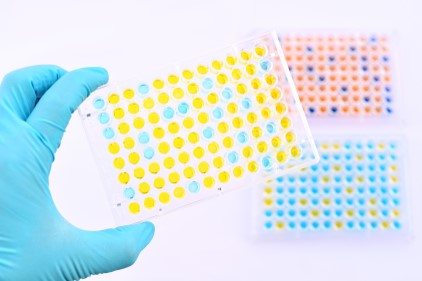This website uses cookies to ensure you get the best experience on our website.
- Table of Contents

ELISA (enzyme-linked immunosorbent assay) is a convenient and simple method to quantitatively or qualitatively detect peptides, proteins, antibodies, and hormones in samples, rendering it as one of the most widely used immunoassays. Despite the many advantages of conducting ELISA, there are some mistakes that could turn your ELISA experiment sour. Help prevent this situation from happening by avoiding 5 common pitfalls when performing an ELISA:
1. “I think I still have some of the TMB coloring development agent from the previous kit. Maybe I’ll use that instead.”

Stop! Wanting to conserve resources is a good habit, but not in this case. We should avoid using reagents from different batches together. Each reagent in the kit has been optimized for that specific lot to ensure best performance. Using a reagent from a different lot may affect the ELISA’s detection ability and generate inconsistent experiment results. Furthermore, previous reagents may have degraded depending on the manufacturing date and storage conditions.
Remember: Do not mix reagents from different lots.
2. “Hmm...Might not have enough space in the incubator, so I’ll stack these plates instead.”

That’s not a good idea.
Stacking plates during incubation may cause the edge effect to occur. The edge effect happens when the outer wells are exposed to different conditions (e.g. varied temperature) than their neighboring inner wells, resulting in unexpected and inconsistent values. Plates that are unequally incubated will lead to greater CV values for OD readings.
To control for wells that have been affected by the edge effect, we would recommend duplicating, or even triplicating, well assay for both standard and samples so that comparisons can be made when large discrepancies develop.
Remember: For more consistent results, do not stack plates during incubation.
3. “I don’t think the plate is dry enough. Should I do anything else to make it drier?”

Please proceed with caution.
ELISA protocols instruct to invert the 96-well plate and tap any residual fluid onto paper towels or other absorbent material. We want to make sure that the residual fluid has been removed, but we don’t want the plate to become completely dry. When the wells are completely dry, the active components on the plate will become inactivated, which will negatively impact assay performance.
Remember: Do not let the 96-well plate become completely dry.
4. “I don’t think I need to change the pipette tip for these wells. It should be fine.”

A bit risky there.
Although you don’t need to change pipette tips for each replicate, we would advise to change pipette tips when switching between different samples or standards. We don’t want contamination to ruin your experiment results!
Remember: To avoid cross-contamination, do not reuse tips and tubes between different samples or standards.
5. “Will I be able to use this today? It’s okay, I’ll just put it back into the freezer even if I don’t get to use it today.”

Attention!
Unless otherwise specified, reagents should be brought down to room temperature. However, it is also important to limit the number of freeze-thaw cycles the reagents are subjected to. In order to keep reagents in their best condition, we would recommend preparing single-use aliquots once you receive the reagents. By doing so, you are taking another step to ensure that you can obtain consistent and reproducible results.
When purchasing an ELISA kit, make sure to choose an ELISA kit that provides microplates in strip-well format. For example, Boster Bio’s PicoKine™ ELISA kits are provided in 96-well format with removable strips, so you can use a portion now and store the rest for later!
Remember: Do not let reagents experience repeated freeze-thaw cycles. Aliquot the reagents!
Questions? Have another pitfall you would like to share to save your research fellows from stumbling? Feel free to let us know at [email protected] and we will be happy to assist you.